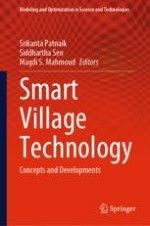2020 | OriginalPaper | Buchkapitel
7. Can Haphazard Growth in Urban Villages Be Prevented? Experience from the Ahmedabad-Gandhinagar Region
verfasst von : Sweta Byahut, Jay Mittal
Erschienen in: Smart Village Technology
Aktivieren Sie unsere intelligente Suche, um passende Fachinhalte oder Patente zu finden.
Wählen Sie Textabschnitte aus um mit Künstlicher Intelligenz passenden Patente zu finden. powered by
Markieren Sie Textabschnitte, um KI-gestützt weitere passende Inhalte zu finden. powered by
